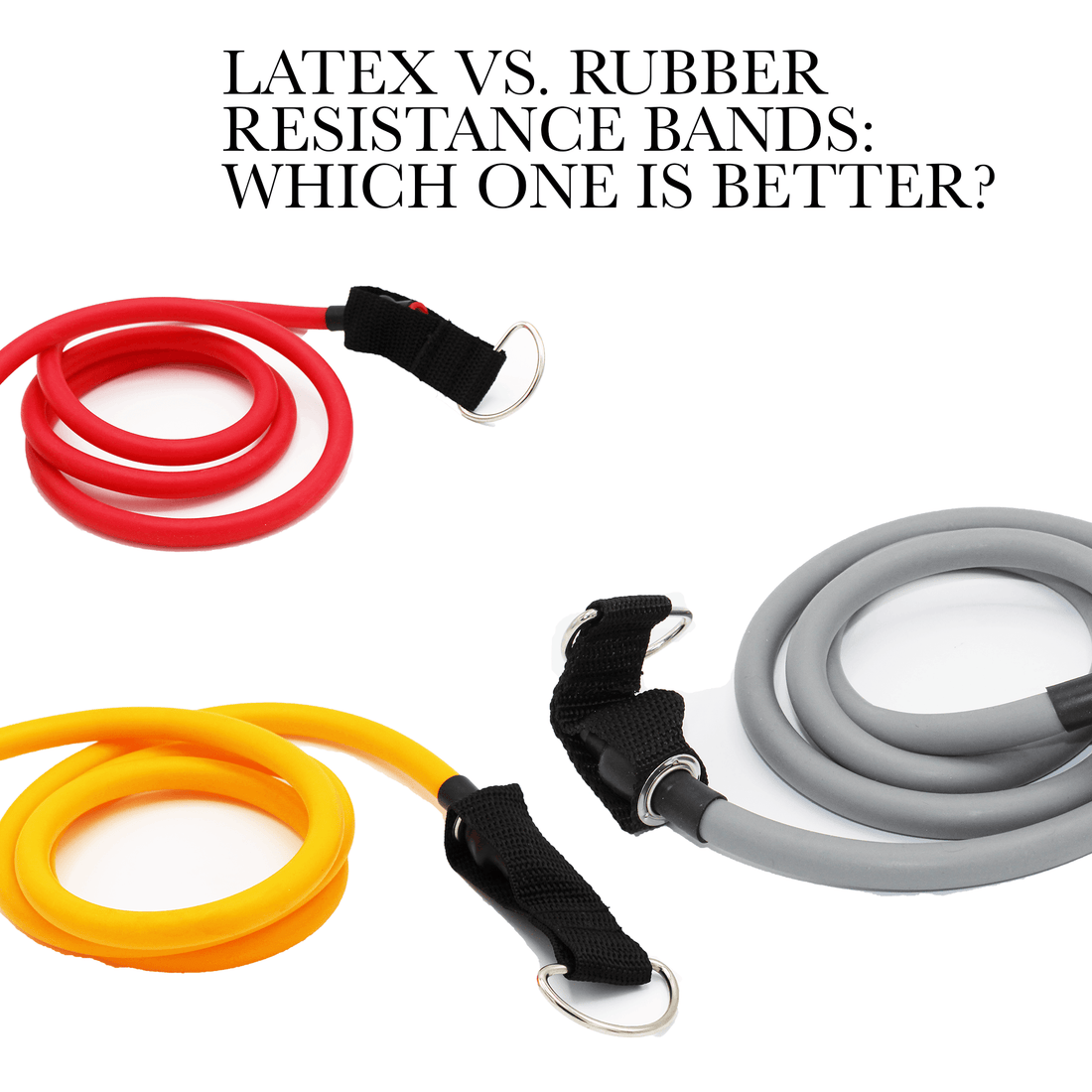Resistance bands are used for exercise and physical therapy. Usually they are used for strength training, and help with the growth and toning of muscles. They are also used for training weak or injured muscles, so that they can go back to performing fully and healthily.
But, there are quite a few choices of these bands in the market. From bands for full-body workouts to ones for specific body parts, to different sizes, materials, etc. there is something for everyone.
So today, we will be discussing the positive and negative aspects of a two resistance band materials, specifically latex and rubber. Now, let's get to it.
Latex Resistance Bands:
Latex or NRL is basically natural rubber that is extracted from the rubber tree. It is used in a bunch of different things, such as balloons, swim caps, etc. but today, we will be solely focusing on resistance or exercise bands.
Pros:
- Stronger
Resistance bands made from latex are stronger and can be stretched further more easily, as they have more tensile strength. This is because the rubber in them is natural.
- Better Elasticity
Latex is generally more stretchable, and has more elasticity. This makes it a great material for resistance bands, as they require their users to stretch them quite a lot at times. This elasticity helps the band retain its original shape and keep from tearing.
- Biodegradable
Latex is the most natural form of rubber. It is fully pure, so it is understandable that it decomposes easily and helps the environment as well, as it is fully biodegradable.
Cons:
- Allergies
Some people are allergic to latex, and if they use resistance bands consisting of it, the reactions can be quite harsh. They can cause itching, rashes, tightening of chest, etc. and these usually happen within a few moments of contact.
- Drying Up:
Overtime, latex resistance bands start to become brittle, as the moisture in them tends to dry up. To prevent this or to keep it from happening for as long as possible, protect your bands from direct sunlight and lubricate them regularly.
Rubber Resistance Bands:
Rubber or non-latex resistance bands are made out of synthetic rubber, known as thermoplastic elastomer or TPE, which is manufactured by clumping and drying petroleum-based chemicals together.
Pros:
- Non-Allergic
These bands are great for people with latex allergies. They are safe to use on their bodies, and do not cause any harsh reactions or breakouts.
- UV-Resistant
TPE bands are better at withstanding heat, as unlike natural rubber, they do not tend to go brittle and dry out over time. But in fact, they are better at resisting the affects of ozone and ultraviolet or UV radiation, which is great as that makes them very durable.
Cons:
- Lesser Elasticity
These bands are at a slight disadvantage when it comes to the elasticity scale, as they are not as elastic as latex ones. That has to do with the fact that they are made of artificial plastic, and overtime may actually loose their ability to retain their shape.
- Non-Biodegradable
Unlike latex, TPE is petroleum-based, so it does not decompose in nature and is non-biodegradable. This is not great for the environment, as they can actually end up causing harm rather than good for it.
Conclusion:
So overall, both of these materials have their positives and negatives. Most of the bands you will find in the market are actually made of latex, but that doesn't mean that the TPE ones are bad. It simply means they are different, because as pointed out before, people with latex allergy can use these and not be left out of more affordable and just as effective workout equipment. But it is true that there is a decrease in the elasticity. In the end, it comes down to the needs and choices of the users.
We hope that this article helped you understand the difference between the bands of both materials, and you are able to make a well-informed decision when choosing the material of your resistance band.









